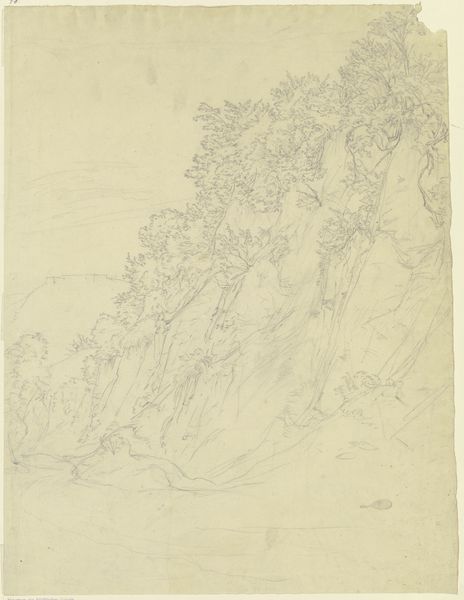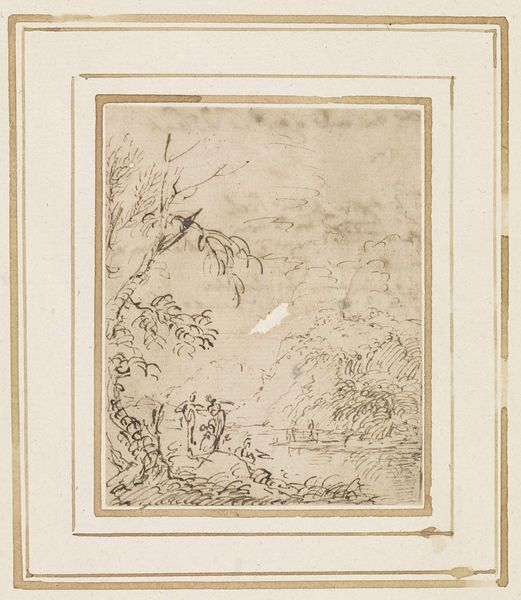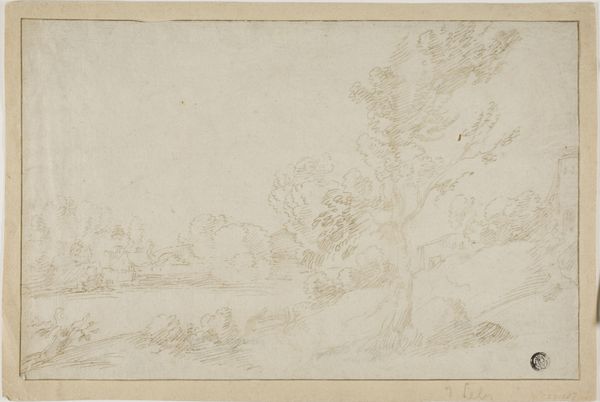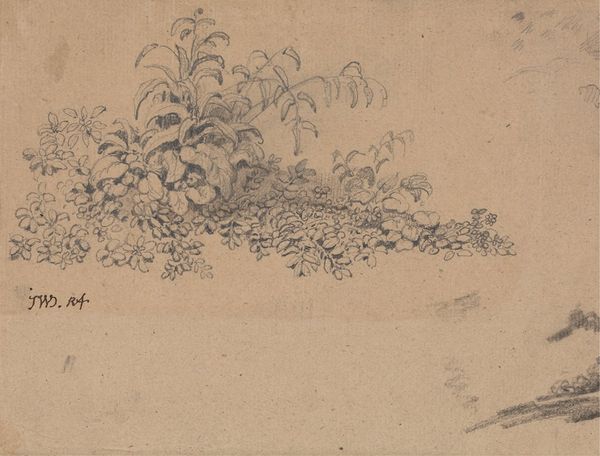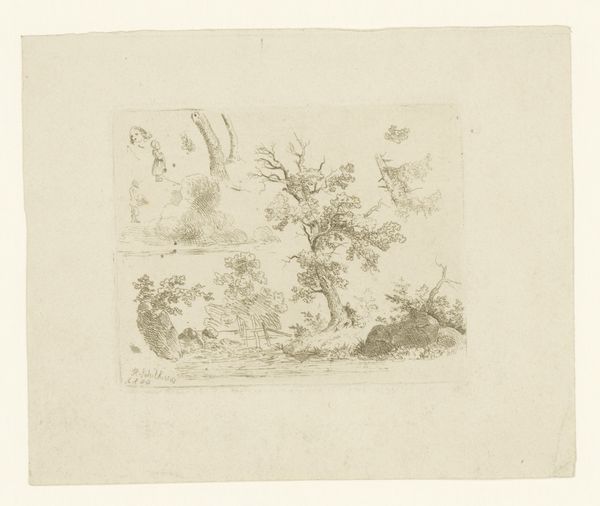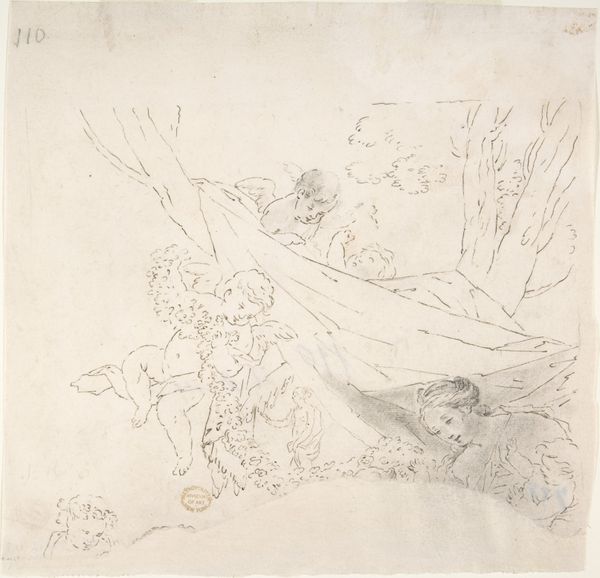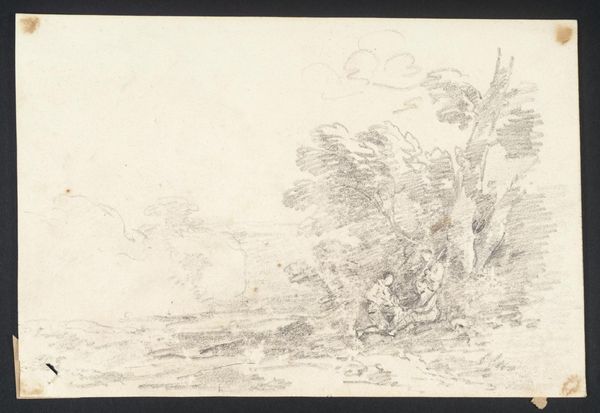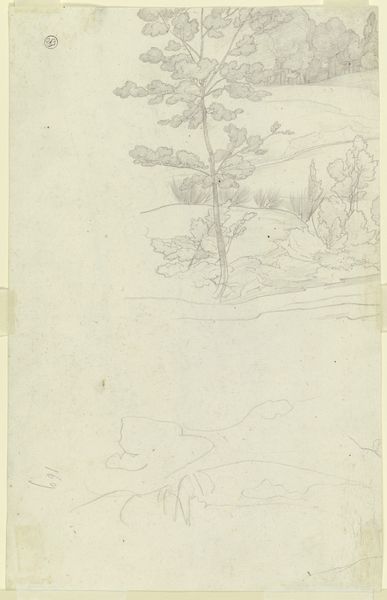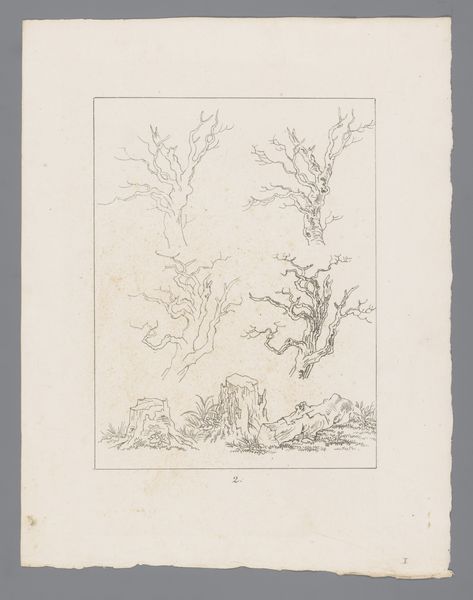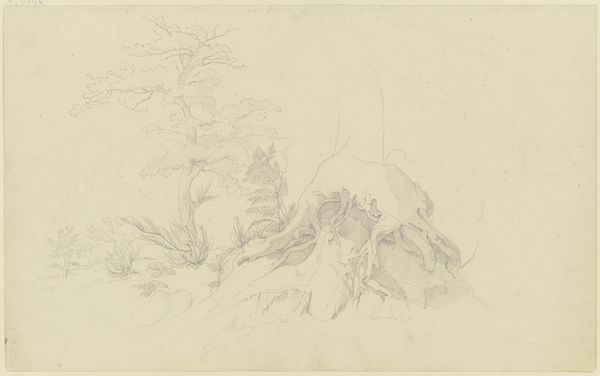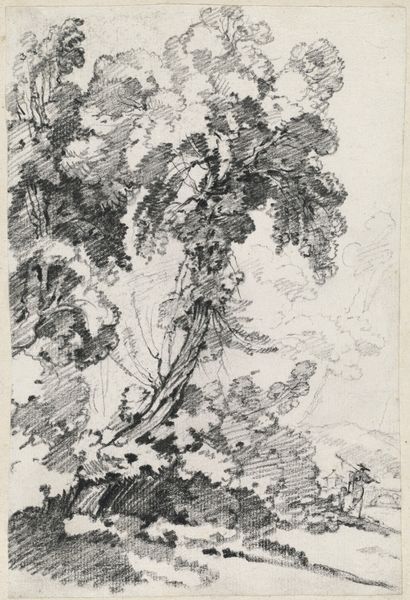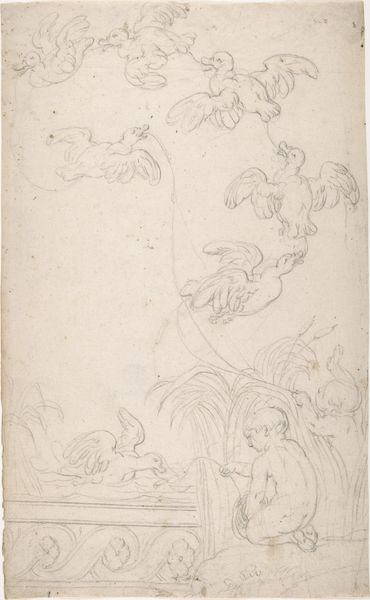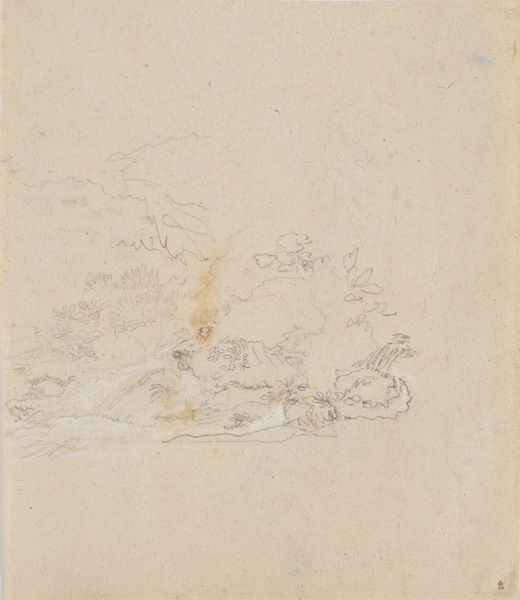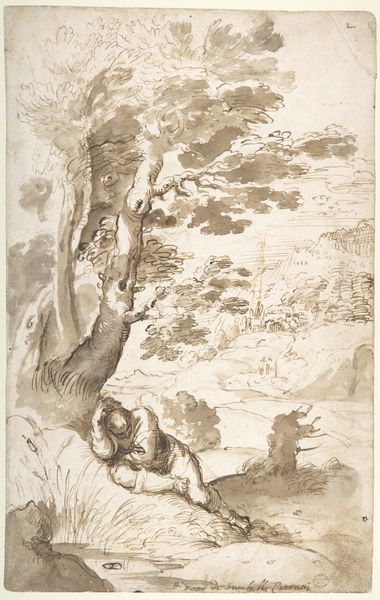
Three Designs for Book Illustrations 1820 - 1884
0:00
0:00
Dimensions: 8 3/4 x 4 13/16 in. (22.3 x 12.2 cm)
Copyright: Public Domain
Curator: This piece is titled "Three Designs for Book Illustrations" by Adrian Ludwig Richter, created sometime between 1820 and 1884. It's a drawing, a print in etching, pencil, and pen and ink on paper, currently held here at the Metropolitan Museum of Art. Editor: It’s like a visual poem, isn't it? Ethereal, delicate—almost fleeting in its form. Three separate scenes, layered vertically. Are these different drafts for the same story? Curator: Perhaps, but given Richter’s embrace of Romanticism, it’s more likely these scenes each represented ideal moments and morals extracted from common, rural life. The commission of creating art that was reproductive like printmaking allowed for a broader consumption by an emerging bourgeois, which could explain his choice of materials. Editor: Tell me more about the choice of reproduction and how it would affect the final artwork. Curator: In this piece, the etching serves as the matrix, which the drawing is transcribed onto. This process allowed for prints to be sold in large numbers, creating access for families and the emerging middle class to participate and even frame fine art. In tandem with the growth of landscape and folk-themes and mythologizing peasantry, we see this shift toward familiar iconography reflected throughout Europe in art markets. Editor: Interesting! What social narratives were circulating that inspired Richter to pursue prints of bucolic scenes? Curator: At the time, cities were growing rapidly with people transitioning to manufacturing economies, this transition left many families longing for a vision of simpler lives of virtue through toiling the soil. Each vignette encapsulates that fantasy, though. At the very top, we have a knight riding towards war in what seems to be a very calm, heroic composure. The middle register shows cherubic children nestled together, blissfully wrestling—presumably in straw, giving viewers a sense of family unity and peace. Finally at the bottom, a couple nestled underneath the forest canopy near what seems to be a family dog, almost like a classical pastoral motif but far more quaint in tone. Editor: Yes, they definitely paint this idealised picture of unity and a simple life. It almost speaks to the rise of literacy amongst the rising bourgeoisie, since this was intended to accompany literature, giving readers something more than words to understand the emotional depths of a narrative. What a moment in book and art history! Curator: It is indeed, from paper to production to placement of viewership—the piece’s impact can truly be understood as an object circulating ideas that reflected not just the romantic ideal but market accessibility for art. Editor: Agreed! So much to consider from such delicate, seemingly simple lines.
Comments
No comments
Be the first to comment and join the conversation on the ultimate creative platform.
